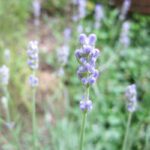farewell summer
Goldenrod starts blooming in late August and it is seen as a signal that the season is changing, hence one of its common names “farewell summer”. It is a graceful tall perennial with tiny and fluffy yellow flowers. As is the case with many heirloom medicinal herbs goldenrod went in and out of favor with gardeners, as customs and preferences changed over time. In the sixteenth century it was in great demand for its wound healing properties, it was considered a remedy for fixing loose teeth and it helped treat kidney stones. The plant lost its popularity in the nineteenth century.
Goldenrod adds interesting texture to the garden, especially when said texture comes in bright mustard yellow. A wonderful late blooming flower which provides welcome pollen and nectar to bees, butterflies and bumblebees, this plant has real medicinal properties: it helps heal skin wounds and irritations, alleviates urinary tract infections and alleviates kidney disease.
If you are looking for a good natural colorant, the leaves and flowers of goldenrod are used to make yellow plant dye for textiles.
The herb spreads easily in some areas (it is the state flower of Kentucky) and it is considered a symbol of good luck.
A less known fact about goldenrod, it contains rubber and will yield up to 12 percent of its total mass under a special fertilizing regimen. The rubber is very high quality and doesn’t deteriorate over time.




 Previous Post
Previous Post Next Post
Next Post




